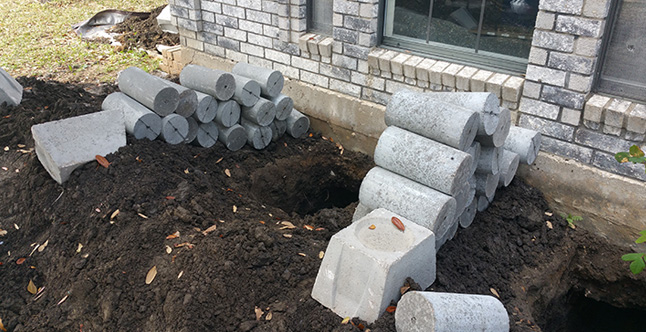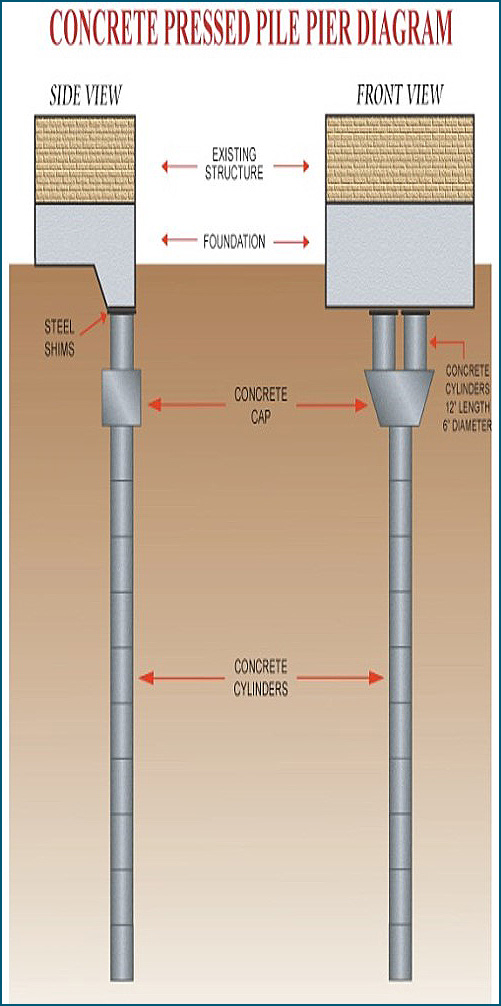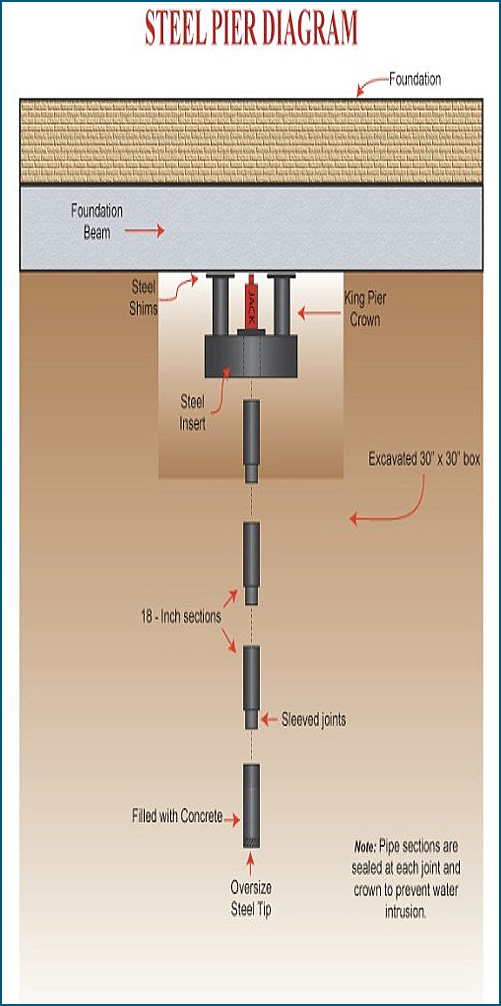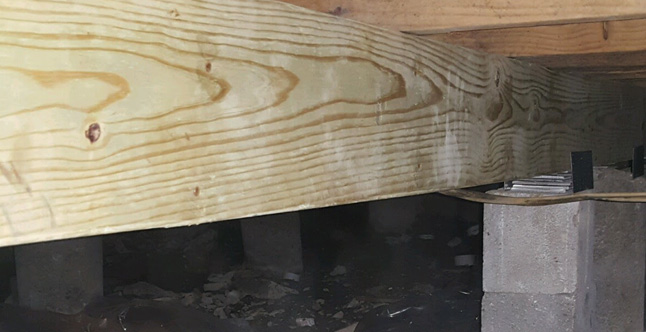Foundation Repair Services
Slab and Pier & Beam Maintenance Tips:
- Install good ground cover. This will prevent excessive moisture from seeping deep into the soil, causing problems to the foundation structure. This will also prevent erosion of the soil. Good ground cover also prevents excessive "drying out” of the soil through evaporation and will help maintain a more constant, uniform moisture level in the soil beneath.
- Water the soil around the house during dry periods, just enough to keep the grass green. More watering is needed in areas with more abundant shrubbery, plants, and trees. The south and west sides of the house are more exposed to the sun and may need more water-ing to offset rapid evaporation.
- NEVER water too close to the foundation. Stay about 18 inches away with the water.
- NEVER pour water into the cracks of the ground. These cracks usually go a few feet deep, and the water will reach soil that is normally undisturbed by concentrated amounts of moisture. Depending upon the shrink/swell potential of the soil, the soil may up-heave, or it may consolidate and lose volume. Either way, this will undermine the foundation and cause problems.
- NEVER place sand, sandy loam, or rocks around foundations. They are porous and allow water to pass quickly to the soil. Clay soils are nonporous and are recommended for proper water drainage away from the foundation.
- NEVER allow water to pond around the foundation. If water stands for very long, it will seep under the foundation.
- Keep soil sloped away from the foundation to prevent ponding of water. Standing water next to a home is a major cause of uneven stress on a foundation which can result in localized movement of the foundation. Long-term, this can result in the soil heaving or consolidating depending on the soil type – resulting in uneven foundation movement.
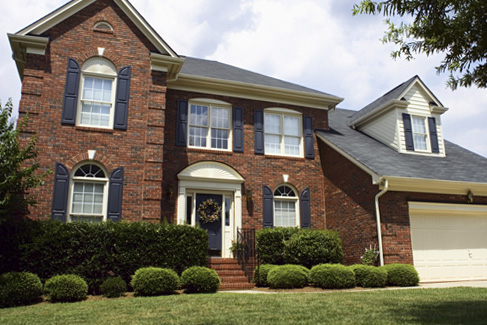
- Water the soil evenly around the foundation during the dry times of the year. Water enough to keep the soil from pulling away from the foundation or cracking. The lawn area of the home should also be watered. The soil should be watered enough to allow the water to soak into the soil several inches. If soaker hoses are used, place the hoses one to two feet from the foundation and use them for about one hour every other day. Over-watering the foundation can cause the soil to heave or can cause the soil to lose its load bearing capacity and allow the house to sink.
- Remove trees that are close to the foundation if the trees are not native trees. Root barriers may also be an acceptable alternative.
- Plant new trees at least 30‐40 feet away from the foundation. Do not plant fast-growing trees such as mulberry, Arizona ash, silver leaf maple, etc.
- Maintain the plumbing system & prevent leaks in showers and in the piping. If you have a pier & beam home, have the crawl space inspected annually to make sure it is dry.
DRAINAGE REPAIR
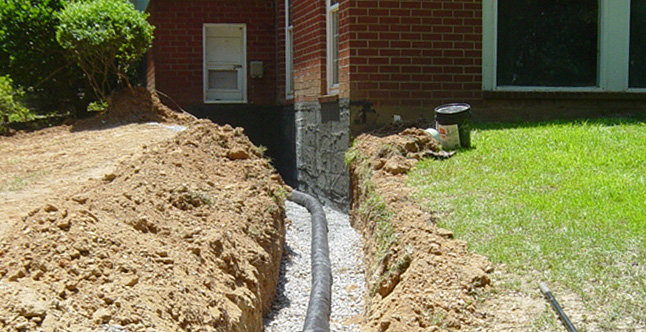 We have clay soil here in North Texas, and pooling or excess water can cause any foundation to raise up. This is because the clay acts like a sponge and swells when wet. This can cause wood rotting or the pad/blocks under the home to sink, which causes damage. RS FOUNDATIONS specializes in installing drain systems around your home where there tends to be standing water, including:
We have clay soil here in North Texas, and pooling or excess water can cause any foundation to raise up. This is because the clay acts like a sponge and swells when wet. This can cause wood rotting or the pad/blocks under the home to sink, which causes damage. RS FOUNDATIONS specializes in installing drain systems around your home where there tends to be standing water, including:
- Surface drains
- French drains
- Downspout/Gutter tie-ins
The soil around the home should slope away from the house at a rate of 1/2" per foot; this prevents water from standing near the foundation. If you have low spots or the site conditions simply don’t allow this change in grade, a surface drain system may be right for your home. Our consultants will be able to advise you if french drains will work for your unique situation during your free evaluation.
ROOT BARRIER INSTALLATION
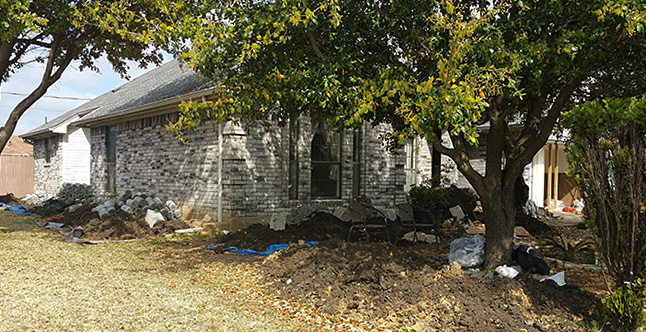 The act of cutting off the roots of trees that are growing near a building by installing a barrier to prevent them from encroaching in an area where they are not desired is called installing a root barrier. The need for root barriers is related to the fact that expansive clay soil shrinks as it dries out. Any structure that expansive clay soil is supporting will move downward as the soil dries and shrinks. If the soil dries on one side of the structure and not the other, the soil shrinks where it has dried and remains expanded where it has not dried, causing the structure to experience differential settlement. Differential settlement can cause serious damage to a structure.
The act of cutting off the roots of trees that are growing near a building by installing a barrier to prevent them from encroaching in an area where they are not desired is called installing a root barrier. The need for root barriers is related to the fact that expansive clay soil shrinks as it dries out. Any structure that expansive clay soil is supporting will move downward as the soil dries and shrinks. If the soil dries on one side of the structure and not the other, the soil shrinks where it has dried and remains expanded where it has not dried, causing the structure to experience differential settlement. Differential settlement can cause serious damage to a structure.
A root barrier is usually installed between concrete foundations or flatwork and adjacent trees within their mature height from the foundation and where there is expansive clay soil to prevent tree roots from consuming moisture from the soil under the area of concern. Installation of root barriers can prevent damage to a concrete slab on grade foundations when appropriately installed. The soil under a structure will swell or expand as it becomes rehydrated and in doing so will lift the portion of the structure that has experienced differential settlement back to near the level of the structure where differential settlement has not occurred.
RS Foundations only installs root barriers that are made with an impermeable, durable material that can withstand burial in soil for an extended period of time.
We appreciate the kinds words from our customers...
"Mike came to our house in March to look at our foundation. He was professional and quickly drew up the outline of the foundation of our house and measured the foundation levels at various points around the perimeter of the house. He advised that our foundation was in good condition. He did not try to sell us on his services. If fact he told us that the minor cracking we had in our drywall was cosmetic. Very impressed that he did not once mention getting any foundation work done."

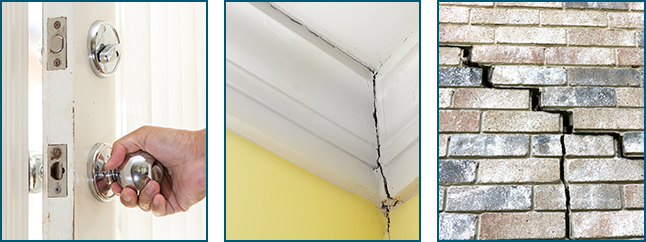 Whatever the cause for the foundation problems, settlement of any kind can ruin a building’s value and even render it unsafe or unlivable. How quickly you respond is the key. Who you call for help is critical!
Whatever the cause for the foundation problems, settlement of any kind can ruin a building’s value and even render it unsafe or unlivable. How quickly you respond is the key. Who you call for help is critical!